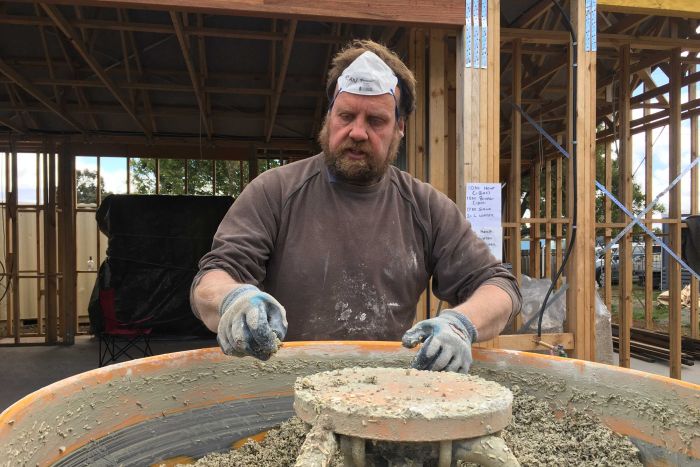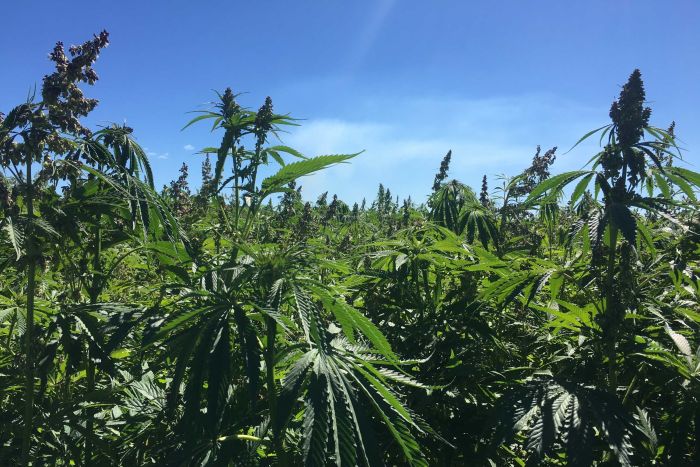 Tasmanian builder Andrias McMahon has been working with hempcrete on two recent projects. “The process of structurally making a building with hempcrete is not very far from a conventional building,” he said. “You need to give it a minimum of six weeks to cure — that’s the primary cure. “The overall curing process takes about 50 years to complete; the process is called carbonation as the material takes up atmospheric carbon, that’s the lime, effectively returning to its mineral state, that’s limestone.”
Tasmanian builder Andrias McMahon has been working with hempcrete on two recent projects. “The process of structurally making a building with hempcrete is not very far from a conventional building,” he said. “You need to give it a minimum of six weeks to cure — that’s the primary cure. “The overall curing process takes about 50 years to complete; the process is called carbonation as the material takes up atmospheric carbon, that’s the lime, effectively returning to its mineral state, that’s limestone.”
Hempcrete is made from mixing the woody fiber inside the hemp stalk with lime and water and then it is pushed into timber frames by hand to build insulating walls.
Sean Manners spent six years researching alternative building methods before using hempcrete for his new home in northern Tasmania. He said the cost of the build per square meter was roughly equivalent to the cost of a double-brick house, “if you look at the cost over 10 years”. Building with hempcrete is fairly repetitive and labor intensive, so he enlisted volunteers to help with tamping the mixture in place. “Some have come for one day and I’ve never seen them again,” he laughs. “Then others, like Simon over there, come every day, so it’s a wonderful thing.”
Tasmania produces nearly two thirds of the national commercial hemp crop, with the bulk of it grown for the food market. Next year there may be a local processing plant. In the meantime, Mr. McMahon anticipates hempcrete homes will take off. “I’ve got a number of people that are contacting me with fairly regular frequency,” he said. “I know of six projects that are set to proceed in the next 18 months, so it seems to be rapidly growing the demand.” There are already over a hundred homes incorporating hempcrete in Australia.
You can read the original article at www.abc.net.au

Let’s hear it for HEMP!
Kelly, thank you for continuing to keep us all informed what is happening around the world.